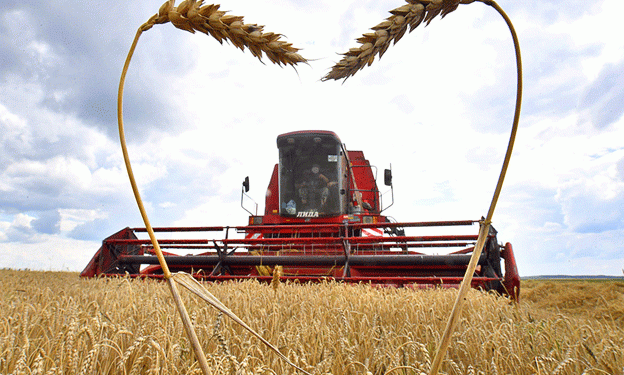The 2024 growing season has been an arduous one for farmers in the Orenburg region. A summer marked by persistent rains delayed the start of the harvest, leaving fields waterlogged and challenging the progress of heavy harvesting machinery. Despite these difficulties, many farmers have managed to achieve yields as high as 30–39 centners per hectare, which would typically be cause for optimism. Yet, a combination of market factors, weather conditions, and logistical issues is complicating efforts to turn this harvest into profit.
A Season of Weather Extremes
In Grachyovsky District, farmers have faced the dual challenge of navigating a wet growing season and a market where the price of durum wheat, which dominates local production, is dropping. As one farmer, Yevgeny Shestakov, from the “SPK im. Shevchenko” farm, explained, even after investing in fertilizers, chemical treatments, and proper care, the final product—now downgraded to feed grain—can barely fetch a profit.
Heavy rains in late August further exacerbated the situation, soaking fields and delaying harvest operations until grain quality had already deteriorated. Fields once full of golden wheat were now laden with moisture, with kernels sprouting in the ears, rendering them suitable only for livestock feed.
Declining Prices and High Costs
The falling price of wheat, especially durum wheat without “glassiness” (a characteristic that affects the wheat’s market value), poses a significant challenge. Without this quality, prices plummet, and despite achieving decent yields, farmers are struggling to sell their harvest at a price that covers their costs. The current price offered is around 10 rubles per kilogram—barely breaking even for most producers after factoring in the costs of fertilizers, herbicides, and other inputs.
Compounding the issue is the rising cost of agricultural machinery and fuel. For example, in 2021, the cost of a combine harvester was equivalent to 2,000 tons of wheat. Today, that same equipment costs the equivalent of 4,000 tons of wheat, a stark increase that makes it difficult for farms to invest in new machinery.
Livestock: A Saving Grace?
For some farms in Orenburg, livestock farming has become a financial lifeline. Yevgeny Shestakov admitted that he once viewed livestock as a burden, but recent experiences have shown him its value as a stabilizing force for the farm’s finances. His farm, which maintains 1,350 head of cattle, 500 of which are dairy cows, plans to increase this number to 600 by winter. Livestock not only provides year-round employment for farmworkers but also generates steady income from milk and meat sales, which helps offset the volatility of crop sales.
Farmers with their own drying facilities are also better positioned to handle this year’s challenges. In Grachyovsky District, 11 grain dryers have been installed, allowing farmers to dry their grain to the correct moisture levels for storage and sale. While the energy costs associated with running these dryers are high—Shestakov noted that drying just one day’s worth of grain can cost up to a million rubles—it ensures that the grain doesn’t spoil, making it a vital tool for maintaining profitability in such a challenging year.
The 2024 harvest in the Orenburg region illustrates the resilience of farmers in the face of adversity. While they have managed to achieve decent yields despite a challenging growing season, market conditions and high input costs are making it difficult for them to realize significant profits. Livestock farming and grain drying facilities have provided some relief, but the challenges remain formidable. As farmers continue to adapt to these circumstances, their ability to innovate and diversify will be crucial to their long-term sustainability in a market that is as unpredictable as the weather.
Error





